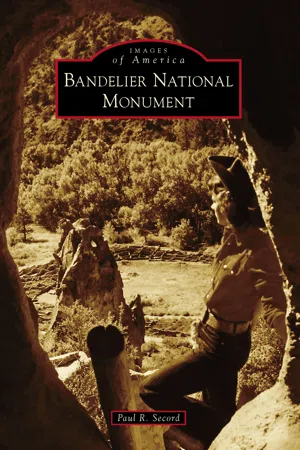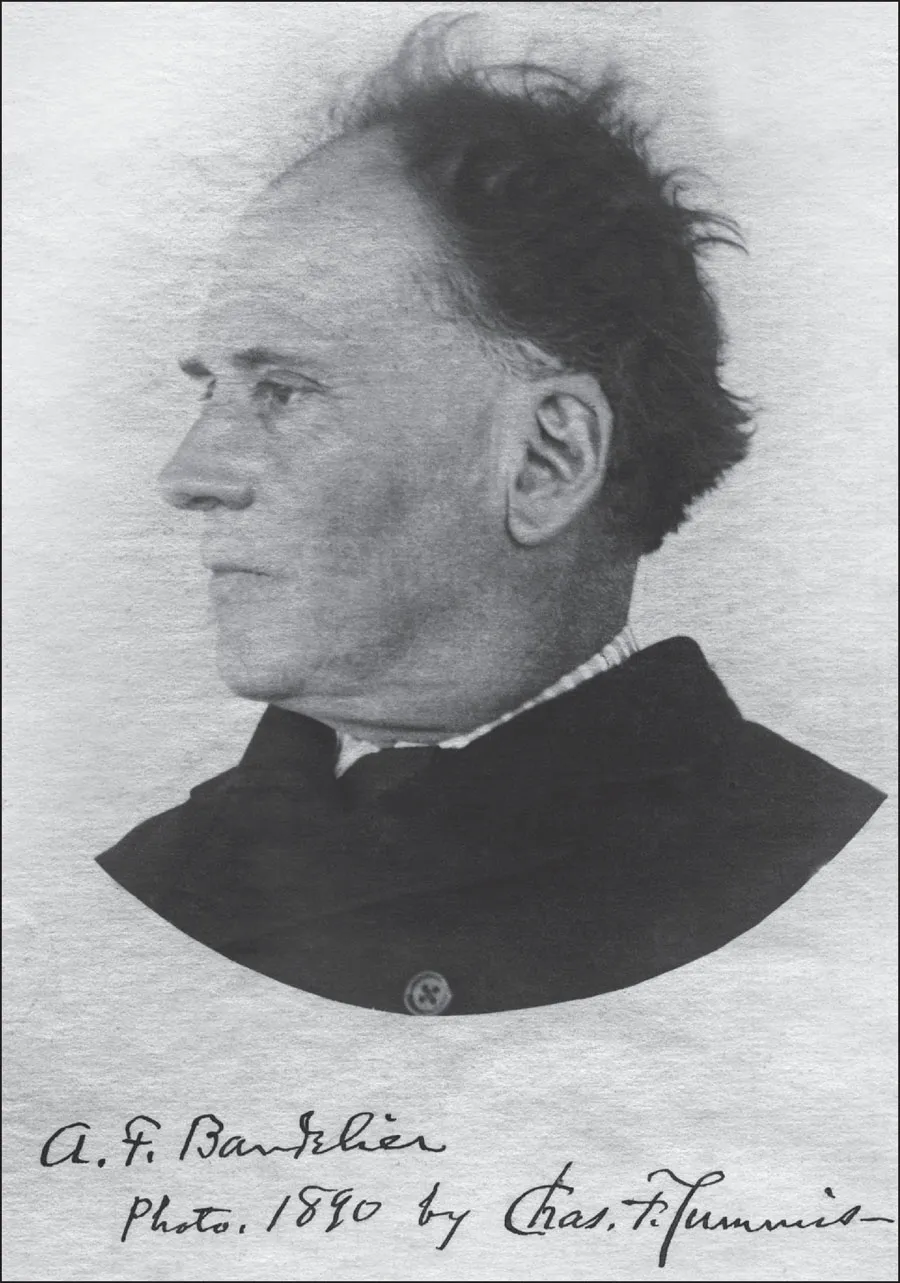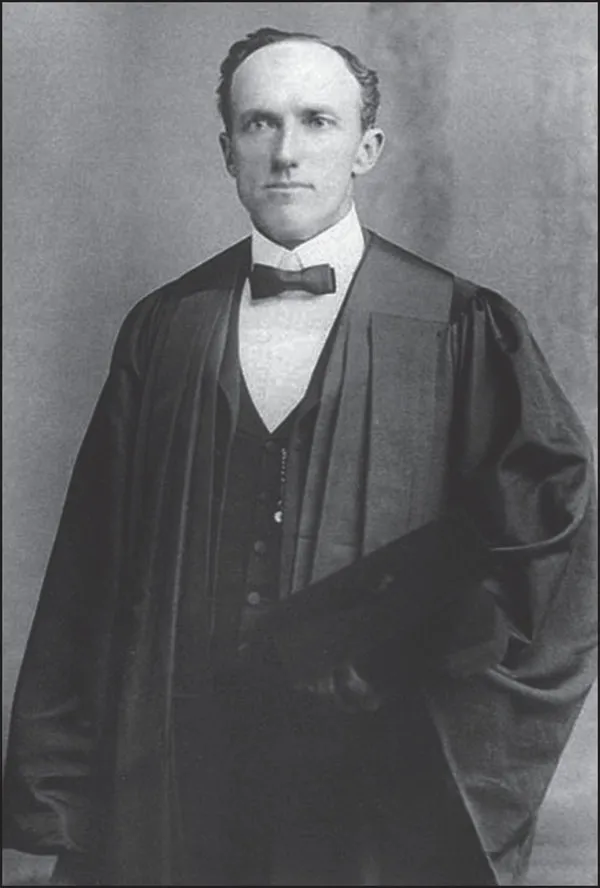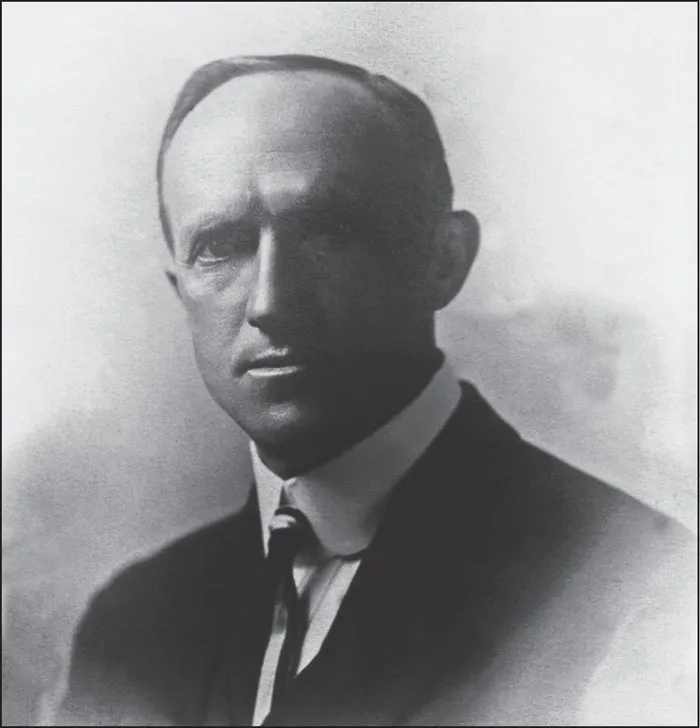![]()
One
UNCOVERING THE PAST
The extensive US National Park Service (NPS) archive at Bandelier contains numerous images of the legacy of human occupation on the Pajarito Plateau. The name Pajarito means “little bird” in Spanish and was applied to the area in the late 19th century by Edgar Lee Hewett. It seems an apt name for the area, as it is found as a Puebloan surname, and the Tewa word tchirage, “place of the Bird People” is the name of a large ruin on the rim of Pajarito Canyon.
Knowledge of the area has been greatly enhanced by the NPS’s ongoing efforts to comprehensively document the prehistoric archaeological sites, historic structures, and landscapes of Bandelier. Beginning in 1985, a systematic inventory of the cultural resources within the monument was carried out. After 25 years of work, over 3,200 archaeological sites had been identified and have now been documented.
Archaeology has undergone important recent changes in its philosophical approach. The science now demonstrates a much greater sensitivity to the peoples being studied than was typical in the past—especially where the descendants of those ancient peoples still live in the area. This is now possible, to a much greater extent than it once was, as a result of new noninvasive technologies such as ground-sensing radar, high-resolution aerial photography using various light wavelengths, and computer reconstructions.
Only a few of the most significant archaeological sites will be covered in this chapter, and an effort has been made to show how these sites have changed over time.
Adolph Bandelier was born in Bern, Switzerland, on August 6, 1840, and died in Seville, Spain, on March 18, 1914. He is a seminal figure in American anthropology and greatly influenced the movement for government preservation of archaeological sites in the United States—the reason Bandelier National Monument was named for him only two years after his death. In 1873, he met renowned anthropologist Lewis Henry Morgan, who became his mentor and friend. With Morgan’s help, he obtained a fieldwork position in 1880 to travel to the Southwest. (BANC_9367.)
At Cochiti, Bandelier met Juan Jose Montoya (see page 40), who took him to Frijoles Canyon to show him his people’s ancestral homeland. This region became his great love and the focus for his ongoing archaeological research. In 1885, Bandelier wrote a historical novel about prehistoric life in Frijoles Canyon, The Delight Makers, which is still in print. In 1977, his remains were exhumed in Seville, and they were sent to New Mexico in 1980 (see chapter 9). (BANC_9366.)
The map seen here showing the location of BNM in the context of its surrounding is from a 1923 tourist brochure (see page 78). The Valles Caldera and Los Alamos are off the map, to the left. In the early 1920s, there was no good road to the Valles Caldera, and Los Alamos did not yet exist. The Denver & Rio Grande Railroad is shown running adjacent the Rio Grande River between Espanola and Buckman. (BANC_1098.)
Edgar Lee Hewett (1865–1946) is a seminal figure in the archaeology and anthropology of the American Southwest. Without his efforts, BNM would not exist. He was the founder and first director of the Museum of New Mexico and was involved in numerous academic pursuits. Hewett was interested in all aspects of Southwestern prehistory and history, with a great appreciation of the link between living Pueblo peoples and the numerous archaeological sites across the Southwestern landscape. Hewett, greatly influenced by his friend Bandelier, was the first to support and popularize the idea that much of the archaeology across the southwest is ancestral Pueblo. This term is now applied to the Pueblo component of the region’s prehistory, rather than the somewhat pejorative term Anasazi, which means “enemy’s ancestors” in the Navajo language. (Both, BNM.)
Beginning in 1908 and for a number of years after, Edgar Lee Hewett conducted field schools in Frijoles Canyon and surrounding areas. These schools employed and trained many of the most notable archaeologists of the 20th century. Pictured here are participants in Hewett’s field school in 1910. From left to right are (first row) Sylvanus Morley, Kenneth Chapman, Percy Adams, Jesse Nusbaum, Nathan Goldsmith, and Junius Henderson Back; (second row) W.W. Robbins, Donald Beauregard, J.P. Harrington, F.W. Hodge, Edgar Lee Hewett, Neil Judd, Maude Woy, and Barbara Freire-Marreco. The photograph below of an early Hewett field school shows (first row) ? McFee, F. Springer, and two unidentified; (second row) unidentified, Eleanor Hope Johnson, Mary Bulkley, Quimo Lummis (son of Charles Lummis), Alice Jackson, Jack Nairn, two unidentified, F.W. Hedge, and Charles ?. (Above, BANC_9370; below, BANC_9364.)
Charles Lummis, called “Lum” by his friends, was a Los Angeles newspaperman and founder of the Southwest Museum in that city. He lived at Isleta Pueblo from 1888 to 1892 and was a friend of Adolph Bandelier. The two visited Frijoles Canyon on several occasions, and in 1891 they claimed to have caught trout in the creek—the only record of fish in that waterway. He took a number of early photographs of the area. His writings, including The Land of Poco Tiempo, did much to popularize and spread interest in the Southwest. A canyon adjacent to Frijoles Canyon is named for him. Here we see Lummis perched on the top of the recently reconstructed Talus House ruin, probably in 1920. Tewa Indians from San Ildefonso Pueblo carried out this reconstruction under the direction of Kenneth Chapman. (Above, BANC_2982; below, CJ.)
Tyuonyi (Qu-weh-nee) is an ancestral Keres pueblo, said by Cochiti oral tradition to have been occupied by the ancestors of the modern Cochiti people. It is one of the most dramatic archaeological sites at Bandelier. This ...










